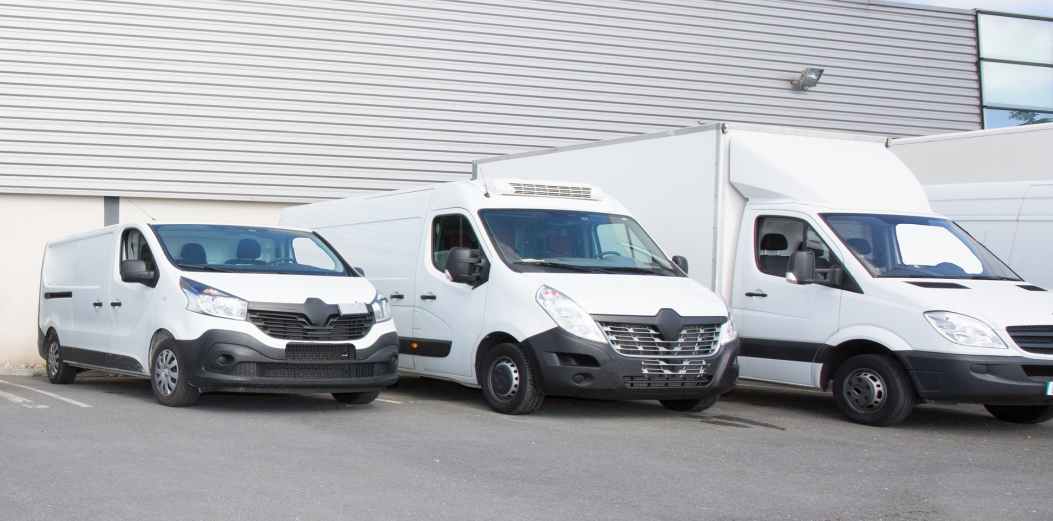5 Ways to Reduce Your Business Fleet Running Costs
When you run a business that is reliant on a fleet of vehicles, that fleet can often be one of the most expensive costs your company faces. From petrol to services and MOTs, ensuring your fleet is up to scratch and performing safely is a hugely important consideration if your business is to run smoothly. Here are 5 ways to reduce your business fleet running costs:
Whether you own a fleet of vans, cars, motorbikes, or whether you lease a fleet from another company, you need to be cost-effective and fuel-efficient. We’re going to look at some ways you can reduce the running costs of your fleet, so you can put those savings back into other areas of your business.
1. Hire a Dedicated Fleet Manager
It may seem counter-productive to hire someone when you are trying to drill down costs but having someone who will be 100% dedicated to the fleet and ensuring it is performing efficiently could be extremely helpful.
Their job will compound a number of elements that would have previously taken you as a business owner valuable time to achieve. For example, a fleet manager would help align your business KPIs with the efficacy of the fleet, thereby introducing optimised routes, suggestions for vehicle changes or improvements, as well as monitoring leasing rates if you do indeed rent your fleet from a third-party company.
Essentially, a fleet manager will run your fleet, so you can continue to run your business.
2. Use Smaller/Lighter/Better Vehicles
If you do not want to hire a fleet manager, or just want to get your fleet in order before you consider hiring one, you should look at whether the vehicles you have are fit for purpose. Not just in terms of your business, but also in terms of the cost it takes to run them.
If you run a courier business for example, and you have large vans that consistently have large amounts of space left even with a full day’s load, you may want to exchange these larger vans for smaller ones. These will be lighter because of the reduced amount of fuel which will help you with those associated costs as well. You could also opt for newer vehicles with aluminium bodies, including HGVs which would usually have been made from steel, that will also be light and therefore more fuel-efficient.
Similarly, it is a good idea to think about what your business really needs from its vehicles. It may be tempting to opt for state-of-the-art trucks with all possible features, but if you do not need them, they add unnecessary weight and cost to otherwise cheaper vehicles.
3. Encourage More Efficient Driving
Your fleet may be made up of the most effective, fuel-efficient vehicles in the world, but if they are driven badly and without care, it will end up costing your business. It is important to encourage better driving from your employees.
Things like sudden braking, heavy acceleration and turning corners will create wear and tear that can result in damage that will need fixing and lower efficiency in terms of fuel. Not to mention the fact that unsafe driving could easily result in an accident that could have disastrous effects in terms of finances, wellbeing of your employees, and the reputation of your business.
Driver training schemes and regular checks, as well as only hiring drivers that have extensive experience, are good ways to help bring about a safer and therefore more efficient fleet.
4. Insure Your Fleet Under One Policy
Fleet insurance can be one of the most expensive elements of managing your set of vehicles. It is highly advisable to insure all your vehicles under one policy for a number of reasons, including only having one set of paperwork to deal with and only needing to communicate with one broker.
The main benefit of having fleet insurance rather than individual policies is that the costs will be dramatically reduced. Also, you can tailor a comprehensive policy to the specific nature of your business, therefore preventing you from being under- or over-insured. For courier companies, you could add goods in transit cover, or if you run a plumbing company you can cover the cost of replacing your tools in the event of a van being stolen. Put simply, you can get full protection without overspending.
5. Start Using Telematics
There has been a huge increase in fleets using telematics and tracking devices to inform both drivers and you as a business owner of the effectiveness of your fleet’s performance.
A telematics system acts as a black box for your car, recording all kinds of information from routes and GPS locations, to speed, to fuel consumption. Not only can this data be used by your insurance company to help define a more suitable quote (i.e., if it records safe driving you may be able to get a reduced premium), it can also help you or your fleet manager better optimise all sorts of aspects.
If you see data relating to traffic in a particular area at the same time every day, you could look at alternative routes that require less time stuck in traffic and therefore better use of both fuel and time.
There are many ways to help reduce the running costs of your fleet. Most start with a deep look at what your fleet is used for and whether there are areas where time and space are being wasted.
Ask your employees or drivers for feedback and listen well; they are on the front line and can often offer a human insight into various issues that may be costing you money.
Your fleet is important to your business and, more often than not, you can cut costs without cutting down on effectiveness and customer service.
Over to you now. Have you any tips on reducing business fleet costs? Share them with us in the comments below.
Source: business-achievers.com




